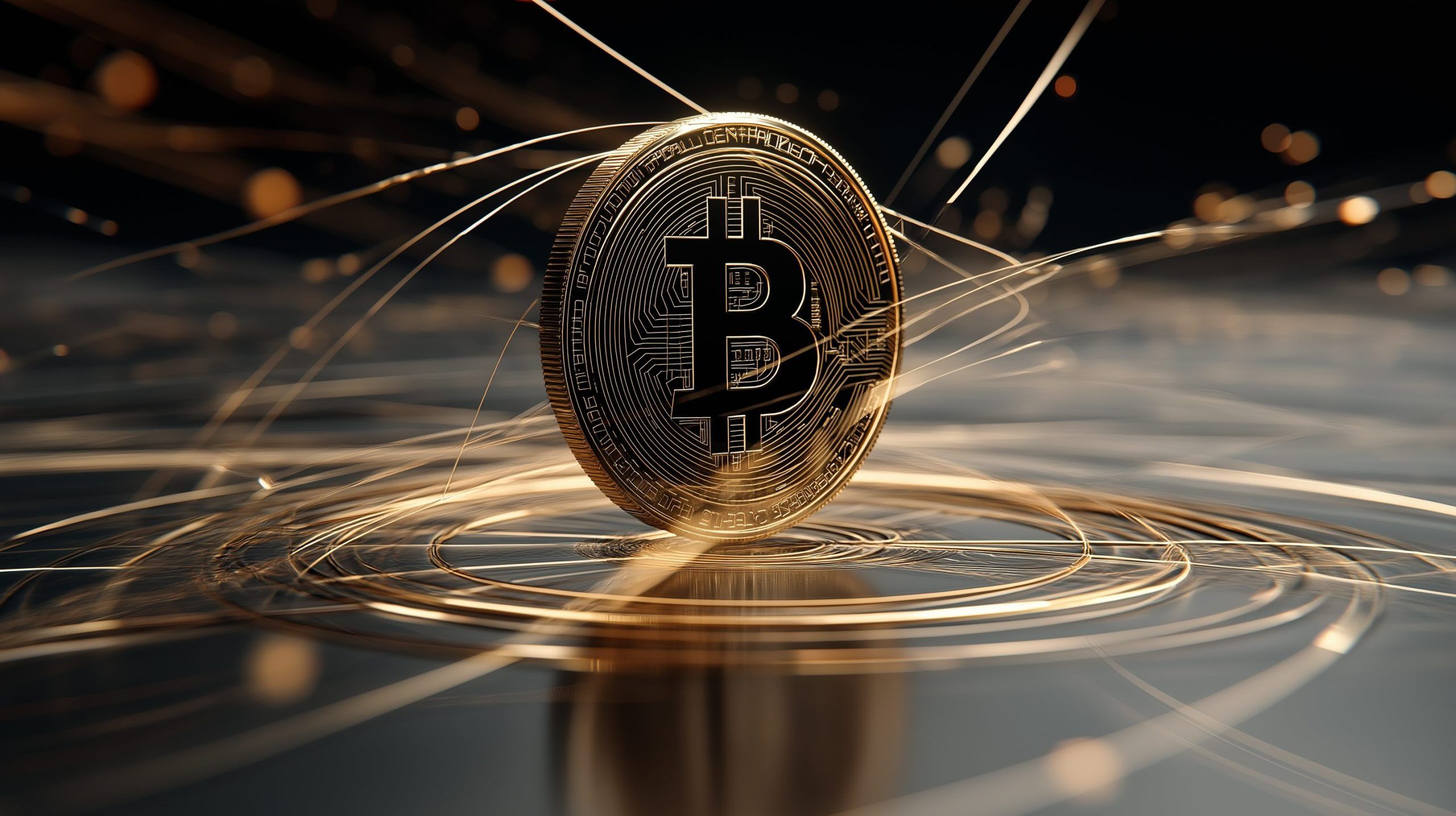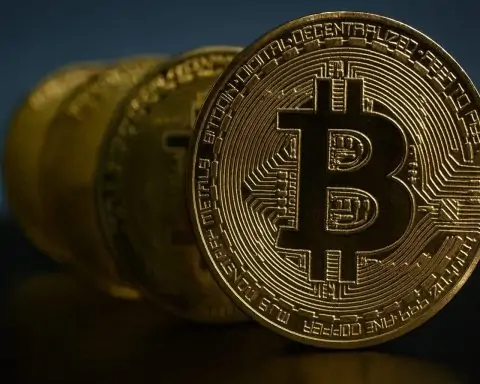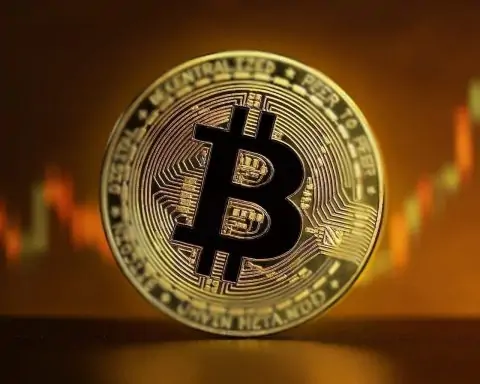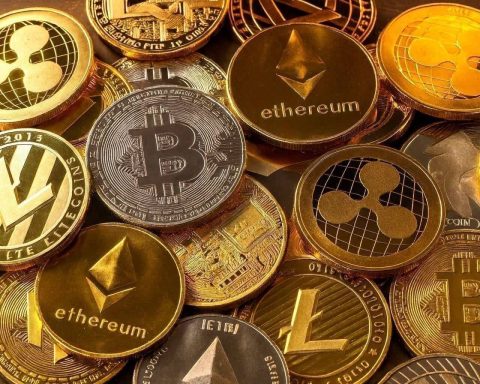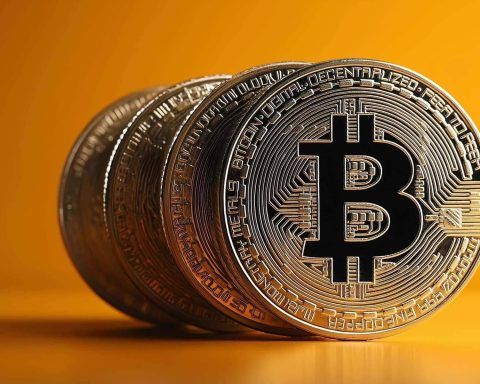- Bitcoin briefly topped $120,000, then slipped to around $117,500, triggering over $500 million in liquidations and wiping out more than 176,000 traders.
- Ether (ETH) nearly reached $3,860 before retracing to about $3,745, and ETH is up roughly 67% over the past month.
- BitMine Immersion holds 300,657 ETH while SharpLink Gaming holds 360,807 ETH, making SharpLink the largest publicly disclosed ETH holder.
- XRP surged to a new all-time high around $3.65 on July 18.
- Solana (SOL) hovered just under $200 after a ~20% weekly gain and ~47% monthly rise.
- Nasdaq-listed Upexi Inc. raised $200 million to boost its Solana treasury to 1.818 million SOL (about $331 million) and expects $26 million in annual yield at current rates.
- Binance Coin (BNB) exceeded $800 for the first time, around $804, lifting its market cap to about $111.5 billion.
- Total crypto market cap topped $4 trillion for the first time this cycle, with open interest on top alt derivatives over $40 billion.
- Coinbase added BNKR, JITO, and MPLX to its listing roadmap, with BNKR up about 27% and MPLX about 18% on the news.
- In regulatory moves, the GENIUS Act was signed on July 18, 2025 to create a federal framework for dollar-backed stablecoins with full regulations due by early 2027, while the House passed the Digital Market Clarity Act on July 17 to clarify token definitions and agency jurisdiction; CoinShares secured a MiCA license from France’s AMF, enabling EU-wide passporting.
Bitcoin Rally Pauses Near Record Highs
Bitcoin (BTC) briefly topped $120,000 — a level not seen in years — before pulling back by over 2% mid-week [1]. The dip to around $117,500 at Wednesday’s Wall Street open triggered more than $500 million in liquidations across crypto derivatives, as over 176,000 traders saw positions wiped out [2]. Analysts viewed the move as a healthy breather: “Not an actual breakout upwards… likely that we’re going to retest the lows of the range again,” commented veteran trader Michaël van de Poppe after the liquidity sweep [3]. Some are eyeing support around $113K as a potential local bottom, noting that a 6–7% pullback to that Fibonacci level could set the stage for the next leg up [4]. Despite this week’s volatility, Bitcoin’s market structure remains bullish, and optimistic traders still target fresh highs toward $130K+ after a short-term correction [5].
Altcoin Season Ignites: ETH, SOL, XRP Soar
A broad altcoin rally accompanied Bitcoin’s ascent, fueling talk of a new “altseason.” Ether (ETH) nearly reached $3,860 before a modest retrace to ~$3,745, indicating some profit-taking by short-term holders [6]. Still, ETH is up ~67% over the past month [7]. Notably, two public companies have been on an Ether buying spree. BitMine Immersion now holds 300,657 ETH, while SharpLink Gaming overtook it with 360,807 ETH after recent purchases [8]. This makes SharpLink the largest public ETH holder – a dynamic reminiscent of MicroStrategy’s Bitcoin playbook. Their accumulation has bulls hopeful that ETH will reclaim $4,000 soon, though charts show $3,494 as key support; a break below that could open a deeper drop to the mid-$3,300s [9]. Altcoin enthusiasm isn’t limited to Ethereum: XRP surged to a new all-time high around $3.65 on July 18 [10], extending a rally as investors cheer recent legal and payment adoption wins. Even meme and utility tokens are flying – Dogecoin jumped ~35% this week and Cardano 50% in the past two weeks, though both remain well below their historic peaks [11].
Solana (SOL) has been another star performer. SOL hovered just under $200 on Wednesday after rallying ~20% for the week [12] [13], and it’s up a staggering ~47% over the past month [14]. A major driver was institutional accumulation: Nasdaq-listed Upexi Inc. announced it raised $200 million to boost its Solana treasury to 1.818 million SOL (worth ~$331 M) [15]. Upexi now stakes nearly all its SOL, expecting $26M in annual yield at current rates [16]. The company’s CEO touted this as a “first-of-its-kind model for altcoin treasury management in public markets,” positioning Upexi as a vehicle for investors seeking crypto exposure [17]. On the heels of this news, a popular analyst on X (Twitter) proclaimed Solana “ready for a massive pump” with a price target of $400–$500 in the ongoing bull run [18]. SOL’s market cap gains have even pushed it into the top six cryptos, though skeptics note it’s still ~30% shy of its January peak [19].
Binance Coin (BNB), the exchange token, made headlines by soaring past $800 for the first time. In early Asian trading hours Wednesday, BNB hit a new all-time high around $804 [20], capping a >16% weekly and 30% monthly rise [21]. This price spike lifted BNB’s market capitalization to roughly $111.5B (about the size of Nike) [22], briefly leapfrogging Solana in the rankings. “BNB hits a new ATH of $800,” Binance’s official account trumpeted in celebration [23]. Changpeng “CZ” Zhao, Binance’s founder (now former CEO), took to social media to credit the community, thanking “all the ecosystem players, BTC maxis, ETH holders, meme traders, ETF applicants, treasury companies, good regulators, and utility builders” for helping drive the milestone [24]. Beyond market euphoria, BNB’s rally was underpinned by real institutional demand: Nasdaq-listed Nano Labs revealed it has accumulated 120,000 BNB (~$90M worth) as a strategic reserve [25] [26]. Nano Labs even raised funds via a $500M notes deal to eventually acquire up to 10% of BNB’s total supply, signaling a bold bet on BNB’s long-term value [27]. Such moves highlight how crypto treasuries are no longer just about Bitcoin – large players are now branching into top altcoins [28].
Overall, market strategists note the altcoin surge has brought total crypto market cap above $4 trillion [29] for the first time this cycle. On-chain data also show altcoin open interest in derivatives hitting record highs (over $40B across top alts), a sign of leverage building up [30]. Glassnode analysts cautioned that some “froth” is creeping in: Elevated leverage can “amplify both upside and downside volatility” in a reflexive market, the firm warned, urging traders to manage risk amid the exuberance [31] [32].
DeFi and Layer-2 Updates
Decentralized finance saw no major exploits or failures during this 48-hour news cycle – a welcome respite in a year where hacks have already cost over $2 billion in losses [33]. DeFi total value locked (TVL) has been climbing alongside crypto prices, and developers are pressing forward with new features. For instance, a Singapore-based crypto firm launched a high-speed MEV bot platform on July 23, aiming to give traders sub-30 millisecond access to mempools and private relays [34]. Such initiatives show ongoing Layer-2 and trading infrastructure innovation, as projects seek to improve efficiency and user experience for DeFi arbitrage and liquidity provision. Meanwhile, Ethereum’s Layer-2 networks like Arbitrum and Optimism continued to attract users amid lower fees – though no specific L2 blockbuster events hit the wire on July 22–23, usage remains strong as part of the broader bull trend.
On the stablecoin and lending front, the focus has been on growth with caution. No new DeFi rug-pulls were reported these two days, but the community remains vigilant. Security experts noted that many past exploits could have been prevented with better input validation and oracle checks [35], urging protocols to adopt more rigorous auditing. In positive news, some DeFi protocols are seeing renewed deposits thanks to higher yields in the bull market. The stablecoin yield platform Curve Resupply (which suffered a $9.3M hack in June) reported users returning after patching the vulnerability [36] [37]. And across chains, cross-chain bridges quietly operated without incident this week – a relief given bridges accounted for ~38% of exploits in the first half of 2025 [38]. The absence of drama in DeFi over the past two days underscores a shift toward consolidation and security as the sector matures.
NFTs and Memecoins: Mania Returns
The NFT market showed flickers of its former frenzy, driven by both genuine fan interest and speculative hype. The surprise death of rock legend Ozzy Osbourne on July 22 led to an overnight rush on his NFTs. Within hours of the news, fans and collectors piled into Ozzy’s official CryptoBatz NFT collection, propelling the floor price up over 400% (from under 0.02 ETH to about 0.08 ETH) [39]. At its peak Tuesday night, the cheapest CryptoBat was selling for roughly $295 (up from ~$60 earlier that day) [40]. Even more astonishing, trading volume exploded by 100,000% in 24 hours, topping $281,000 according to DappRadar [41]. This posthumous pump — while modest compared to 2021 NFT mania — suggests many want a digital memento of the “Prince of Darkness.” (Osbourne launched CryptoBatz in 2021 as 9,666 bat-themed NFTs, a nod to his infamous bat-biting stage stunt.) The spike, though short-lived, has observers wondering if it might signal an NFT market rebound after a prolonged slump [42]. “Though modest compared to 2022 levels, the latest spike in Osbourne’s NFTs could signal a potential NFT market rebound,” Cointelegraph noted, as industry leaders cautiously anticipate a broader revival in NFT trading [43].
Blue-chip NFT collections also saw renewed interest amid the crypto rally. Data shows CryptoPunks – the original 10,000-piece profile picture collection – recorded a 467% jump in weekly sales volume, totaling about $22.2 million over 7 days [44]. Other top projects like Bored Ape Yacht Club and Pudgy Penguins have likewise perked up from recent lows (the PENGU token tied to Pudgy Penguins reportedly surged over 500% in the past month [45]). Overall NFT monthly sales, which had languished near $400M, are on track to tick higher again [46], indicating collectors are cautiously re-entering the market.
On the flip side of this enthusiasm, opportunistic scams are piggybacking on trending news. In the wake of Ozzy’s passing, more than a dozen “OZZY” memecoins sprang up on Solana within hours – many of them outright rug-pulls. At least 15 Solana tokens bearing Ozzy’s name or image launched in a short span [47] [48]. According to on-chain data, the creators yanked liquidity within minutes for about 10 of these tokens, draining over 1,625 SOL (roughly $325,000) from unsuspecting buyers [49] [50]. Additional smaller pools likely pushed total scam proceeds closer to $340K before Solana community watchdogs sounded the alarm [51]. This episode highlights a recurring memecoin problem: bad actors exploiting celebrity news and FOMO for quick cash grabs. “The trend highlights how memecoin culture often feeds on celebrity deaths, with crypto markets offering little recourse for victims,” CoinDesk noted in its coverage [52] [53]. Industry analysis consistently finds the vast majority of meme tokens are designed to fail – one report claimed 98% of tokens on certain DEXes end up as scams or pump-and-dump schemes [54]. (A spokesperson for the meme platform Pump.fun controversially defended meme projects as “cultural expression” in markets, albeit assets that often go to zero in the long run [55].) The takeaway: NFT and meme markets are stirring back to life, but caution is warranted – speculation is as risky as it is rampant.
Global Regulation Roundup: Clarity and Crackdowns
Regulatory developments in the past two days were momentous, spanning the U.S., Europe, and Asia. In Washington, lawmakers and the White House advanced the most significant U.S. crypto legislation to date. On July 18, President Donald Trump hosted a signing ceremony for the Guiding and Establishing National Innovation for U.S. Stablecoins (GENIUS) Act, following its bipartisan passage in Congress [56]. This new law creates a comprehensive federal framework for issuers of dollar-backed stablecoins, defining oversight roles for federal and state regulators [57]. “The GENIUS Act creates a clear and simple regulatory framework to establish and unleash the immense promise of dollar-backed stablecoins,” President Trump said at the signing [58]. Industry leaders quickly applauded the move: Coinbase CEO Brian Armstrong praised the legislation’s potential to enhance market confidence, and the head of the Crypto Council for Innovation called it a “watershed moment” for the sector [59]. The Treasury Department and other agencies now have one year to write implementing rules, with full regulations expected to take effect by early 2027 [60]. In parallel, the U.S. House of Representatives passed the Digital Market Clarity Act on July 17, a bill aimed at delineating crypto asset definitions and agency jurisdiction (SEC vs. CFTC) [61]. This is meant to bring coherence to an environment “marked by regulatory uncertainty,” clarifying which tokens are securities or commodities. The Clarity Act faces tougher debate in the Senate, but if enacted by later this year, it would further solidify the U.S.’s emerging role as a global leader in crypto regulation [62].
Across the Atlantic, the European Union’s sweeping Markets in Crypto-Assets (MiCA) regulation is already in motion – and companies are moving to comply. CoinShares, a major digital asset manager based in Jersey, announced it has become the first crypto asset manager in continental Europe to secure a MiCA license [63]. The license was granted by France’s Autorité des Marchés Financiers (AMF) and allows CoinShares to passport its services across all 27 EU countries under a single rulebook [64] [65]. This means CoinShares can offer regulated crypto portfolio management and investment products EU-wide, a huge milestone for cross-border crypto offerings. The firm noted it’s now the only large European asset manager holding MiCA approval alongside existing MiFID (markets) and AIFM (fund management) credentials [66] [67]. “Receiving MiCA authorisation from the AMF is a pivotal milestone, not just for CoinShares, but for the entire European digital asset industry,” said CEO Jean-Marie Mognetti, adding that “with MiCA, we now have a clear, harmonized structure across the EU” for crypto finance [68]. The move could open up Europe’s €33 trillion asset management market to more blockchain-based products [69]. Other firms have quickly followed – crypto exchanges including Coinbase, Bybit, OKX, and Crypto.com have reportedly also secured MiCA licenses or are in process [70]. The tokenization of traditional assets is another theme in Europe: just this week, Germany’s Deutsche Bank announced a pilot for digital bonds on a public blockchain, and Goldman Sachs & BNY Mellon teamed up to offer tokenized money-market fund shares (with trades recorded on Goldman’s private blockchain) [71] [72]. These actions underscore how institutional adoption and regulatory clarity are advancing in tandem in the EU.
In Asia, regulators sent mixed signals. In South Korea, the Financial Supervisory Service (FSS) reportedly warned domestic asset managers to cut exposure to crypto-related stocks and ETFs, reaffirming a strict stance from 2017 [73] [74]. According to a Korea Herald report, the FSS verbally reminded several firms to limit holdings of U.S.-listed crypto ETFs and shares like Coinbase (COIN) and MicroStrategy (MSTR) [75]. This informal guidance comes despite a changing global environment – both the U.S. and Korea have seen evolving crypto policies – but officials insisted that institutions must “abide by the current set of guidelines” until any formal rule change [76] [77]. (South Korea had been considering easing some crypto trading rules for institutions, so this pull-back suggests caution is prevailing.) Meanwhile, Singapore moved to tighten oversight on crypto firms serving overseas clients (to curb money laundering risks), and Vietnam’s government inched closer to launching a pilot digital asset market as it drafts new regulations [78]. And in Japan, a notable public company announced it adopted Bitcoin as a strategic reserve asset amid hopes for U.S. ETF approvals [79] – signaling that regulatory clarity is encouraging institutional crypto investment in parts of Asia as well.
Finally, the United States is gearing up for further policy action in the crypto space. The White House’s Office of Digital Assets is slated to release its first comprehensive crypto policy report by July 30 [80]. This report is expected to outline the administration’s broader strategy for digital assets, covering topics from central bank digital currency (CBDC) development to blockchain innovation and consumer protection. Coming on the heels of “Crypto Week” on Capitol Hill (where multiple bills advanced), this federal framework could provide much-needed guidance on how various agencies will coordinate oversight. Combined with the new laws and global regulatory momentum, the stage is set for a new era of clearer rules — one that industry players hope will unlock greater mainstream adoption while weeding out bad actors.
Exchange & Industry Developments
Crypto exchanges and traditional finance giants made noteworthy moves as well. Coinbase, the largest U.S. exchange, announced on July 22 that it added several altcoins to its listing roadmap: BankrCoin (BNKR), Jito Staked SOL (JITO), and Metaplex (MPLX) [81]. This immediately triggered the classic “Coinbase effect.” BNKR’s price jumped about +27%, and MPLX spiked roughly +18% on the news [82] [83]. (JITO initially pumped double-digits too, though it gave back gains by day’s end amid profit-taking [84].) Coinbase clarified that these assets are not yet fully listed for trading – they’re in review pending liquidity and technical integration – but traders often bid up tokens at any hint of an impending Coinbase listing. Beyond new coins, Coinbase has also been expanding its product suite for advanced traders: this week the company launched regulated perpetual futures for U.S. customers (through its CFTC-approved FairX affiliate) [85]. This marks the first time American retail traders have access to high-leverage, no-expiry crypto contracts on a U.S.-regulated platform, a milestone that could help Coinbase compete with offshore derivatives exchanges.
Binance, for its part, has been riding the wave of BNB’s success and the broader alt rally. The exchange reported a surge in trading activity, with 24-hour spot volumes topping $25 billion at one point [86] – a level not seen in months. However, Binance continues to face legal challenges in the U.S. (from an SEC lawsuit filed in 2023), and no new developments in that case emerged on July 22–23. The company has been focusing on compliance efforts and global expansion in friendlier jurisdictions. Notably, Binance’s UAE affiliate obtained an operational MVP license in Dubai recently, and its BNB Chain is pressing into decentralization initiatives. No major outages or hacks hit the top exchanges during this period; trading infrastructure largely handled the volume influx smoothly, a positive sign compared to past bull runs where downtime was common.
Meanwhile, the line between Wall Street and crypto keeps blurring. Two of America’s oldest financial institutions – Goldman Sachs and Bank of New York Mellon – unveiled a partnership to offer tokenized money market funds to clients [87]. BNY Mellon will use its LiquidityDirect platform to let customers buy shares of money-market funds represented as digital tokens, and these transactions will settle on Goldman’s private blockchain infrastructure [88]. The market for tokenized securities is “rapidly growing as institutions explore blockchain rails to streamline settlements and asset management,” the firms noted [89]. In other words, real-world assets (RWA) like fund shares, treasuries, and real estate are increasingly being put on-chain to enable faster, 24/7 trading and improved transparency. Goldman and BNY join a roster of TradFi players embracing this trend – others this year include JP Morgan’s tokenized collateral pilot and BlackRock’s exploration of blockchain for ETFs. Even the U.S. Federal Reserve is dabbling in digital asset networks via its new FedNow instant payments system (which some stablecoins plan to integrate with). For the crypto industry, these moves by banking giants provide validation that blockchain tech has enterprise use cases.
On the institutional adoption front, beyond the regulatory green lights mentioned earlier, we’re seeing more corporates hold crypto. Along with Upexi’s Solana stake and Nano Labs’ BNB treasury, Japanese investment firm Kitacho announced it adopted Bitcoin as a reserve asset amid growing confidence in crypto ETFs [90]. And asset manager Fidelity reportedly experienced increased inflows to its crypto funds during this rally (coinciding with Bitcoin ETF optimism in the U.S.). Survey data reinforced this momentum: a new Reown/YouGov poll of 1,000 crypto users found that 37% believe payments and AI will be the top drivers of crypto adoption in coming years [91]. “Payments bring real-world demand. AI improves the experience. We don’t see one displacing the other,” explained Reown CEO Jess Houlgrave, noting how both factors are making crypto more useful, trusted and intuitive for everyday people [92] [93]. In fact, crypto payments usage jumped significantly year-over-year, per the survey, now engaging 34% of participants – a sign that crypto is steadily breaking into mainstream finance [94] [95]. From PayPal enabling crypto transfers to Square (Block) rolling out Bitcoin Lightning payments for merchants [96], the infrastructure for spending and integrating crypto in real economies is finally materializing.
Expert Takeaways and Outlook
The past two days underscore a pivotal theme: crypto is hitting new highs – both in price and legitimacy – but not without growing pains. Market experts are split on short-term direction after such a rapid run-up. Some, like analyst Crypto Tony, argue “this isn’t a top” and predict Bitcoin will break above $123K once it consolidates a bit more [97]. Others urge caution given the leverage building up in altcoin markets [98]. Macro factors also loom large. Investors are watching inflation and interest rate signals, as crypto’s ~$4T market cap has made it sensitive to global liquidity conditions (a stark change from its early insulation). Notably, Jim Cramer of CNBC even suggested buying Bitcoin as an inflation hedge this week – an ironic bullish signal from a traditionally skeptical voice [99].
What’s clear is that institutional and retail adoption continues to march forward. “Crypto winter” is now firmly in the rearview mirror, and a multi-faceted crypto spring is underway: Major coins are near or at record highs, DeFi is rebuilding trust, NFTs have flickers of life, and regulators are (finally) crafting rules to support innovation while reining in excesses. The entrance of Wall Street titans via tokenization and treasury investments could usher in a new wave of liquidity – though it also means crypto must live up to higher scrutiny and governance standards.
As always, risks remain. Security experts warn that during bull markets, scams and hacks tend to rise alongside prices. This week’s Solana rug-pulls are a reminder that due diligence is vital; traders chasing the next meme coin or NFT craze can get burned just as quickly as they profit [100] [101]. Regulators, too, will be watching these frothy corners of the market closely, and enforcement actions (from the SEC, CFTC, and global counterparts) are expected to continue against fraud and unregistered offerings.
In summary, July 22–23, 2025 delivered a whirlwind of positive news for the crypto space – tempered by a few cautionary tales. Bitcoin proved resilient around $120K as traders digest gains. Altcoins from Ethereum to Solana to XRP are roaring back to form, in part fueled by fresh corporate buyers and improving sentiment. DeFi is steadying and innovating on the backend, while NFTs and meme tokens remind us that crypto is as cultural as it is financial (for better or worse). Governments and big banks are finally stepping up to provide the guardrails and bridges to traditional finance that the industry long craved, potentially unlocking the next leg of growth. As one crypto CEO put it, the goal now is to make crypto “useful, trusted and intuitive” in everyday life [102] – and the events of these past two days suggest that vision is closer than ever to reality.
Sources: [103] [104] [105] [106] [107] [108] [109] [110] [111] [112] [113] [114] [115] [116] [117] [118] [119] [120] [121] [122] [123] [124] [125] [126] [127] [128] [129] [130] [131] [132] [133]
References
1. cointelegraph.com, 2. cointelegraph.com, 3. cointelegraph.com, 4. cointelegraph.com, 5. cointelegraph.com, 6. cointelegraph.com, 7. cryptopotato.com, 8. cointelegraph.com, 9. cointelegraph.com, 10. cryptopotato.com, 11. cryptopotato.com, 12. www.coindesk.com, 13. www.coindesk.com, 14. www.coindesk.com, 15. www.coindesk.com, 16. www.coindesk.com, 17. www.coindesk.com, 18. www.coindesk.com, 19. cryptopotato.com, 20. coingape.com, 21. cryptopotato.com, 22. cryptopotato.com, 23. cryptopotato.com, 24. cryptopotato.com, 25. cryptopotato.com, 26. cryptopotato.com, 27. cryptopotato.com, 28. cryptopotato.com, 29. fortune.com, 30. cointelegraph.com, 31. cointelegraph.com, 32. cointelegraph.com, 33. www.dlnews.com, 34. www.ainvest.com, 35. www.dlnews.com, 36. www.dlnews.com, 37. www.dlnews.com, 38. coinlaw.io, 39. cointelegraph.com, 40. cointelegraph.com, 41. cointelegraph.com, 42. cointelegraph.com, 43. cointelegraph.com, 44. www.ccn.com, 45. www.ainvest.com, 46. finance.yahoo.com, 47. www.coindesk.com, 48. www.coindesk.com, 49. www.coindesk.com, 50. www.coindesk.com, 51. www.coindesk.com, 52. www.coindesk.com, 53. www.coindesk.com, 54. www.coindesk.com, 55. www.coindesk.com, 56. www.pymnts.com, 57. www.pymnts.com, 58. www.pymnts.com, 59. www.pymnts.com, 60. www.pymnts.com, 61. www.pymnts.com, 62. www.pymnts.com, 63. www.coindesk.com, 64. www.coindesk.com, 65. www.coindesk.com, 66. www.coindesk.com, 67. www.coindesk.com, 68. www.coindesk.com, 69. www.coindesk.com, 70. www.coindesk.com, 71. www.coindesk.com, 72. www.coindesk.com, 73. www.coindesk.com, 74. www.coindesk.com, 75. www.coindesk.com, 76. www.coindesk.com, 77. www.coindesk.com, 78. www.amlintelligence.com, 79. www.ainvest.com, 80. watcher.guru, 81. cryptopotato.com, 82. cryptopotato.com, 83. cryptopotato.com, 84. cryptopotato.com, 85. www.cryptoninjas.net, 86. invezz.com, 87. www.coindesk.com, 88. www.coindesk.com, 89. www.coindesk.com, 90. www.ainvest.com, 91. cointelegraph.com, 92. cointelegraph.com, 93. cointelegraph.com, 94. cointelegraph.com, 95. cointelegraph.com, 96. www.coindesk.com, 97. cointelegraph.com, 98. cointelegraph.com, 99. x.com, 100. www.coindesk.com, 101. www.coindesk.com, 102. cointelegraph.com, 103. cointelegraph.com, 104. cointelegraph.com, 105. cointelegraph.com, 106. cointelegraph.com, 107. cointelegraph.com, 108. cointelegraph.com, 109. cointelegraph.com, 110. cointelegraph.com, 111. cointelegraph.com, 112. cryptopotato.com, 113. cryptopotato.com, 114. www.coindesk.com, 115. www.coindesk.com, 116. www.coindesk.com, 117. www.coindesk.com, 118. cryptopotato.com, 119. cryptopotato.com, 120. cryptopotato.com, 121. cryptopotato.com, 122. www.pymnts.com, 123. www.pymnts.com, 124. www.coindesk.com, 125. www.coindesk.com, 126. www.coindesk.com, 127. www.coindesk.com, 128. cointelegraph.com, 129. cointelegraph.com, 130. www.coindesk.com, 131. www.coindesk.com, 132. cointelegraph.com, 133. cointelegraph.com
